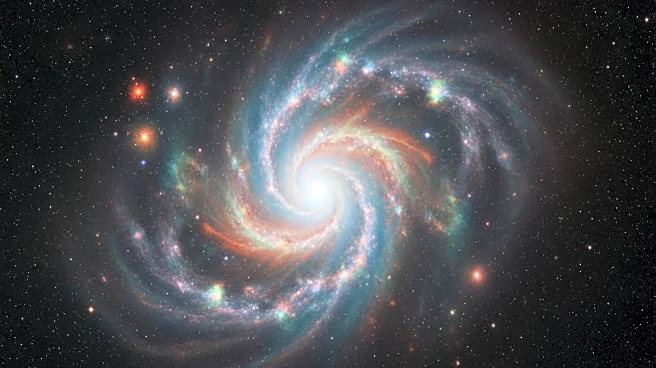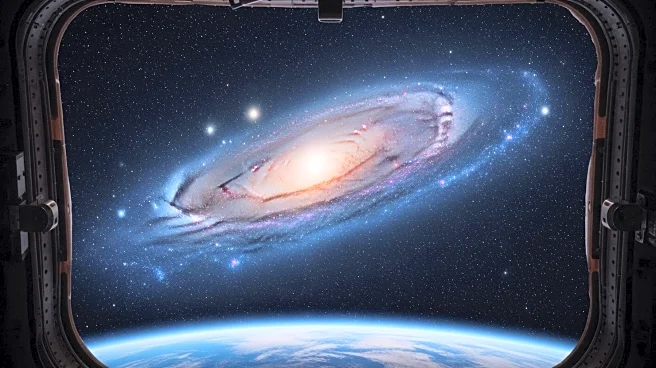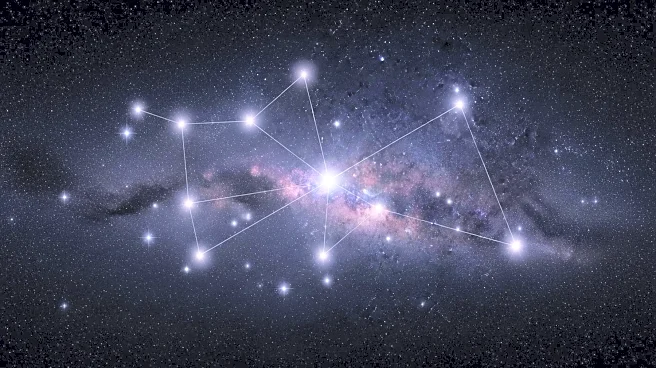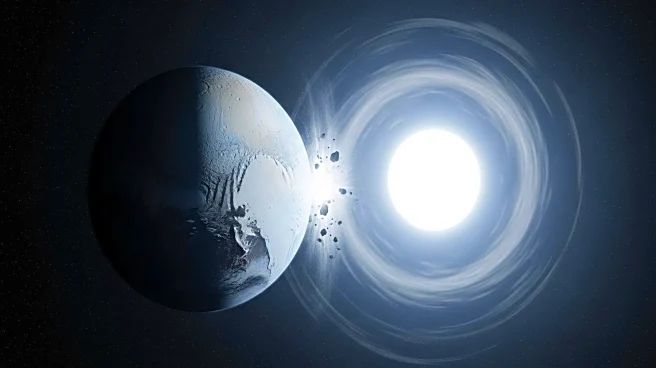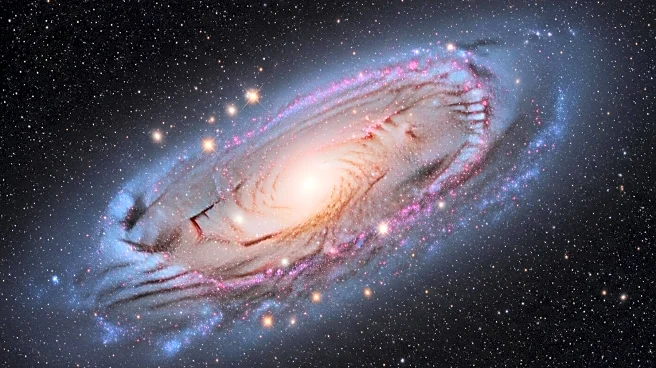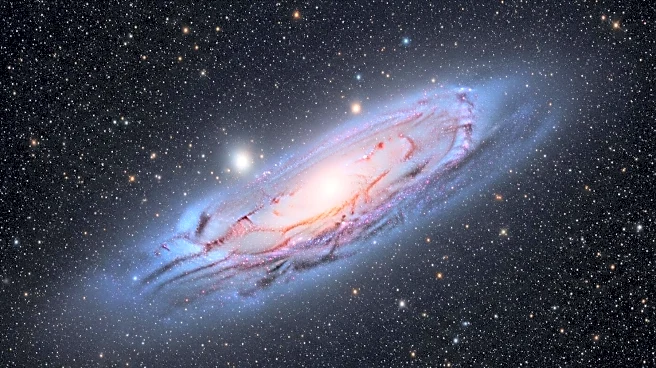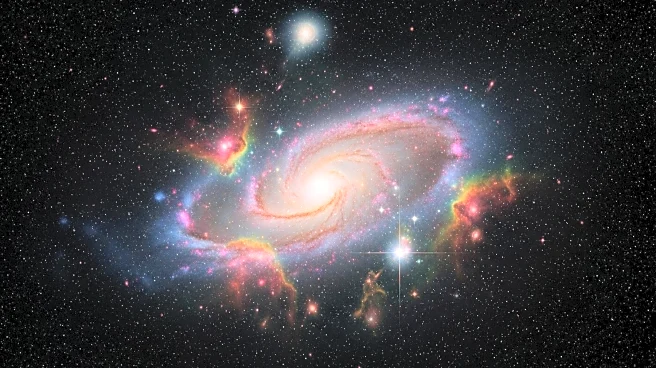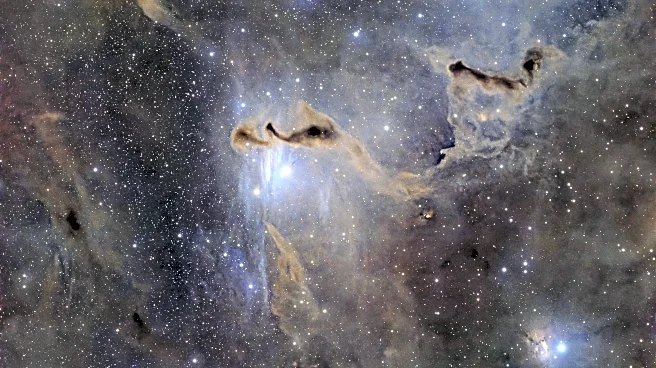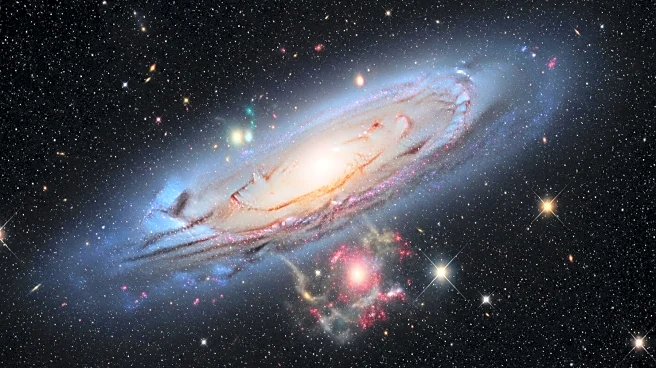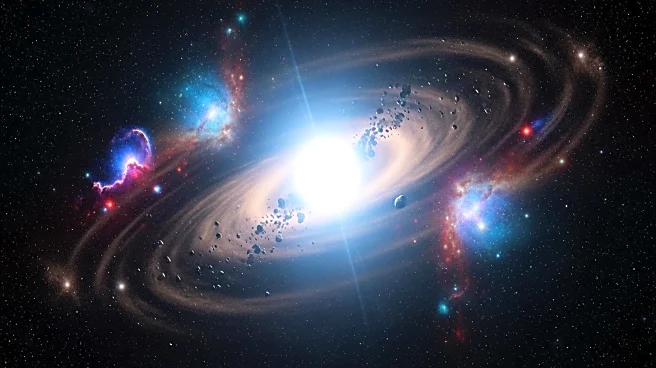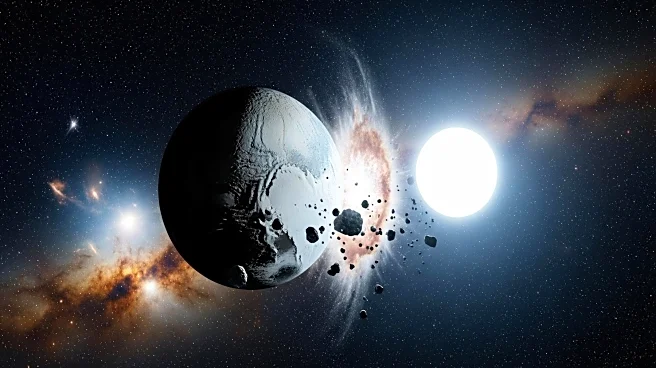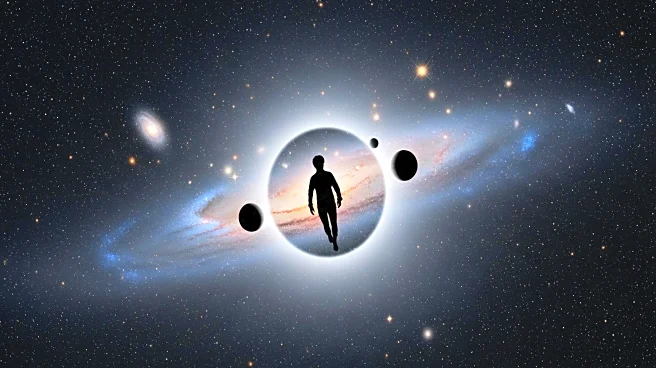What is the story about?
What's Happening?
Researchers from the University of Manchester and Hong Kong University have conducted a comprehensive study on the planetary nebula IC 418, also known as the 'Spirograph Nebula.' This nebula, located in the constellation Lepus, has been observed for over 130 years, providing a unique opportunity to study its evolution. The study utilized a range of spectroscopic measurements dating back to the 1890s, including visual observations and photographic data. The Hubble Space Telescope has frequently imaged IC 418, contributing to the data set. Key findings include changes in the nebula's spectrum, particularly in the blue range, which covers hydrogen and doubly ionized oxygen. The study also noted the nebula's central star is transitioning from a red giant to a white dwarf, heating up faster than typical stars, which challenges existing models of stellar evolution.
Why It's Important?
The study of IC 418 is significant as it provides insights into the final stages of stellar evolution, particularly the role of dying stars in seeding carbon into space. This has implications for understanding the origins of carbon, a fundamental element for organic life. The findings suggest that the star at the center of IC 418 has increased in temperature by 3000 degrees Celsius since its discovery, a rate faster than previously observed in similar stars. This challenges current models and may require revisions in our understanding of carbon star formation. The study highlights the importance of historical astronomical data, demonstrating how older observations can yield new scientific insights.
What's Next?
The study opens avenues for further research into the evolution of planetary nebulae and the role of carbon-rich stars in the universe. Researchers may continue to explore historical data to uncover more about the processes involved in stellar evolution. The findings could lead to adjustments in theoretical models, enhancing our understanding of how stars contribute to the cosmic distribution of elements. Additionally, the study may inspire similar investigations into other nebulae and stars, utilizing both historical and modern observational techniques.
Beyond the Headlines
The study underscores the value of historical astronomical observations, suggesting that many discoveries may still be hidden in old data collections. This highlights the potential for revisiting past observations with modern analytical techniques to uncover new scientific knowledge. The research also touches on the broader implications for understanding the lifecycle of stars and their impact on the universe's chemical composition, which is crucial for comprehending the origins of life.
AI Generated Content
Do you find this article useful?
